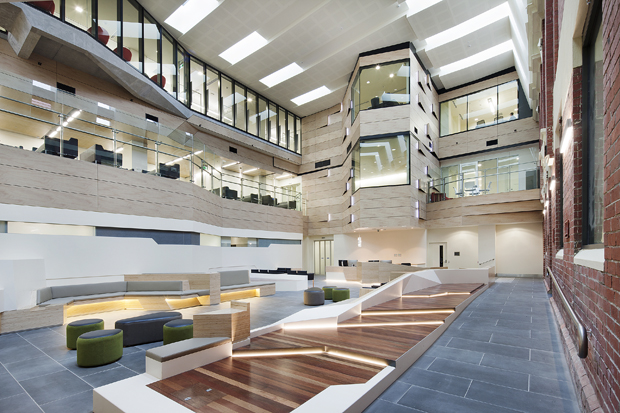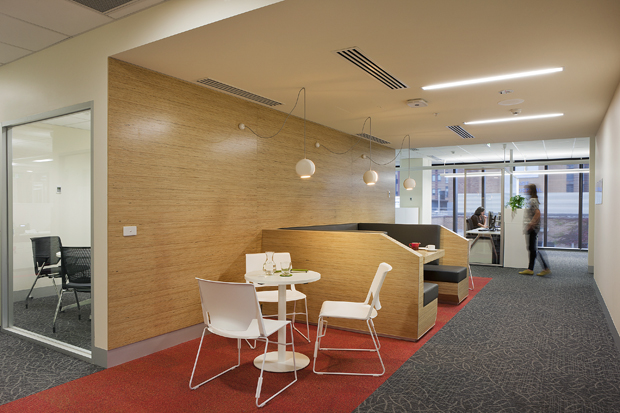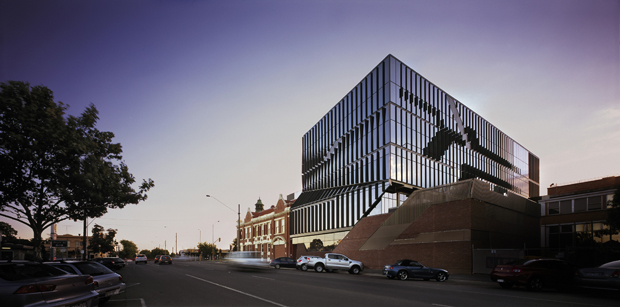The Ballarat Regional Integrated Cancer Centre serves a regional city of approximately 100,000 people, as well as the region extending some five hours’ drive to the west.
As a one-stop-shop for cancer care, the centre has a design aspiration to aid the healing process, and humanise and create an accessible, spatially familiar and encouraging environment for the staff, patients and visitors.
Interior designer Tonya Hinde, who worked with Billard Leece Partnership (BLP), says that good quality, durable materials, particularly in flooring, played a big part in realising this aim.
Each space was carefully considered and fit out with a design that would suit its function and purpose. Products containing chemicals linked to cancer and respiratory problems were also duly avoided.
“From the outset we said to ourselves, ‘It's a cancer centre, so let's try not to specify materials that are linked to cancer,’ like products containing PVC or VOCs,” says Hinde.

In the atrium, patients and visitors are greeted by Natural Bluestone Tiles, a hard-wearing product that would stand the test of time. As a historical feature of many Ballarat public buildings and streetscapes, the tiles successfully create a transition zone between the street and hospital, linking the activities within to the community beyond.
Solution dyed nylon carpet tiles from Interface’s Yin Yang and Cubic Collections were chosen for the consulting suites and general circulation areas. In these spaces, sensory comfort blends with simple aesthetics to generate a calm and controlled atmosphere.

While most health treatment spaces utilise PVC-based vinyl, linoleum sheet flooring from Forbo’s Marmoleum Real Collection is used in the Cancer Centre’s clinical areas, with the contrasting neutral colours of ‘Slate Grey’ and ‘Concrete’ set out in varying patterns.
“Treatment spaces require coved sheet flooring with no seam at the floor-wall junction,” explains Hinde, who says that sticking with linoleum meant they had to manufacture both pre-coved floor and wall sections.

A sweeping flooring pattern in the radiation bunkers is essential in making the place cosier than typical clinical radiation treatment rooms. On the other hand, the Day Oncology rooms feature contrasting floor colours laid in stripes. This ensures that the overall space is visually broken up into personal areas, but without compromising the clinical needs of the open spaces.
The Ballarat Cancer Centre is a prime example of how product choices and interior design are as important as architectural forms and structures. Enduring products which are easily maintained, slip-resistant and anti-microbial can contribute to a lasting environment, while meeting the technical requirements of the site.

Photography by Shannon McGrath and Tony Miller.

